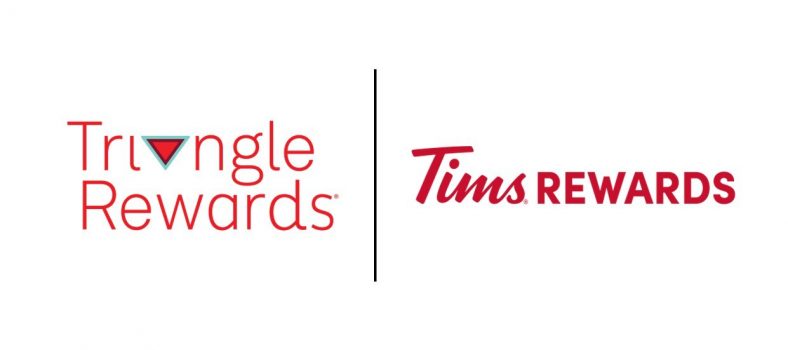 by Richard Schenker
by Richard Schenker
The airline industry in Canada and worldwide has gone through the single most collective economic disruption as a result of COVID-19. The good news for airlines is that travel is back but the economic woes of COVID have had a lasting impact on airline operators. The continuous rise in the cost of operations including but not limited to airline pilot contract hikes, higher fuel costs and rising airports costs all continue to be a reality for WestJet and other airlines.
It should not be surprising to any loyalty industry observers or passengers, that just like its airline peers, WestJet has had to review the P&L of its frequent flyer program given the consequences of this economic paradigm shift. Like other airlines, WestJet has had to build new safeguards into WestJet Rewards to future proof its financial viability. In doing so, WestJet has begun to drip feed to the public some of their WestJet Rewards changes and enhancements. These modifications are intended to modernize the program to keep it competitive, live up to new economic realities and lay the foundation for future program evolutions.
To its credit, WestJet has not made any wholesale changes to WestJet Rewards since 2018. Most airlines have had to make at least one round of program changes and reward devaluations in light of COVID-19 and the resulting economic conditions endured by the industry. For its part, WestJet did not approach this hastily, nor did they introduce any knee-jerk reactionary changes, during or at the tail end of COVID-19. Rather they spent time analyzing and balancing their business needs and the expectations of their members. Some industry observers and customers might be quick to judge these changes, but I would caution that what was shared by WestJet last week, is likely only part of the equation and there is likely more goodness to come for program members in the short and long term.
With any frequent flier program, the operator is always challenged to distribute their investment in benefits disproportionately towards those members who are most profitable vs. those members who are less profitable. In doing so, WestJet has announced several changes which will right size and future proof WestJet Rewards, so they do not have to follow the flight path of other airlines that have had to make several subsequent changes or devaluations to their programs. A decision to change status tier eligibility is not one that is taken lightly in this industry. Airlines understand that some members will be adversely impacted and there is risk of customer attrition and market share loss.
Last week, WestJet shared that they will be changing WestJet Rewards status spend thresholds. The Silver status threshold will move from $3,000 to $4,000 in spend. Gold will move from $5,000 to $6,000 in spend and Platinum will move from $8,000 to $10,000 in spend. These increase sizes are not inconsistent with competitive practices. Ironically, with the industry rise in airfares, it makes it somewhat easier to achieve these new thresholds, especially for frequent fliers. These changes in spend requirement were likely necessitated by three contributing factors:
- Too many members were attaining top tier status, therefore making it feel less exclusive and coveted.
- Too many members were trying to extract benefits inside of top tiers, making it difficult for the airline to provide a consistently available and delivered benefit – this precipitates the erosion of confidence of very best customers and can lead to attrition.
- Too many customers were overrunning costs in the top tiers.
WestJet’s decision to move their status tier upward will help to redistribute their investment towards those members who are most profitable for the airline. As a goodwill gesture and in recognition of members attainability of status, WestJet will honour status level benefits through to the end of 2025, for all members who have reached their respective status in 2024, under the prior spend thresholds.
In the same vein of ensuring that very best members have the ultimate experience delivered consistently on each flight, WestJet Reward Platinum members, travelers booked in Premium and Business Class will be the only customers who board first in Zone 1. Previously Gold members where eligible for Zone 1, but the sheer volume of members, diminished that sense of exclusivity of this coveted benefit. This change is inline with delivering the most preferred access experience with a brand’s very best and highest paying customers, while still maintaining an efficient and elevated boarding experience for top tier members, including Gold.
As well, there are several changes being made to Milestone Rewards. Currently Milestone Rewards are achieved when a member first reaches $4,000 in annual spend. WestJet has reduced that spend threshold to $2,000 to expand its reach to more members and in turn will invest more value to a larger member population base. It is a wise calculation as this move should act as fodder to motivate more members earlier along the path to attain their next status level. While some of the rewards have been dropped there are some newly minted rewards being offered in 2025 at this level including a choice between a $20 WestJet Gift Card, $200 qualifying spend or a $25 Gift Card to WestJet partners including SKIP (a newly formed partnership) and others to be announced. It should be noted that WestJet Rewards has reoriented the milestone awards to be less frequent at the higher spend levels, and it would make sense for them to introduce some excitement into this element, in addition to the other changes planned.
In the spirit of adding flexibility and choice to a member’s experience, WestJet also announced that all members who have earned Companion Vouchers in 2024, will now have an additional year into the end of 2025 to redeem them. Similarly, moving forward in 2025, all earned Companion Vouchers will carry a 2-year expiry date, doubling the current expiry of 1-year. This will afford members additional time and flexibility to plan their trips and redeem this valuable benefit.
Airline loyalty programs are among the most complex in the loyalty industry and are intrinsically tied to the revenue management of the airline. Decisions to make changes, are not for the faint of heart, as they can have profound consequences on customers and the business at large. WestJet is about one quarter of the size of Air Canada and has had to make several critical decisions to compete for Canadians’ airline share of wallet domestically and internationally. Having a healthy and viable loyalty program is a critical ingredient for success. We can expect to learn about additional WestJet Rewards’ plans to enhance their members’ experience in the months to come.
Richard Schenker has previously consulted to WestJet and Air Canada. He is a highly accomplished customer engagement thought leader, loyalty practitioner and partnership curator who has designed, renovated, and managed some of the world’s leading customer loyalty programs. He has an impeccable track record of success at enriching transactional and emotional relationships between iconic brands and their customers, across multiple business sectors. Richard has spent the first half of his career in senior loyalty roles with the Hudson’s Bay Company and Shoppers Drug Mart and the remainder of his career in leadership roles with leading loyalty agencies, Air Miles and Bond Brand Loyalty. Currently he is the Founder & Chief Customer Engagement Officer of Loyal Strategy Consulting, a consulting firm focused on enriching customer loyalty for leading brands. Richard can be reached at: rschenker@loyalstrategyconsulting.com or visit: https://loyalstrategyconsulting.com




